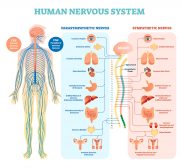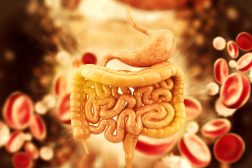Physical Development in Humans

Physical growth measured as height
Table of Contents
The Newly Born Child
Depending on the nutrients available to the child within pregnancy and the genetic makeup of the child, most healthy babies weigh between five and eight pounds. Since the placenta is absent, which previously provided the baby with nutrients, food is required for the metabolic processes and the continued growth of the baby.
Its nutrients derive from the feeding of liquids by the parents, to begin with, as the young baby’s digestive system cannot cope with more complex solid foods. This provides nutrients for continued growth and development.
A newly born child is susceptible to the effects of external factors. One of the factors to watch out for is the adverse effects of electromagnetic radiation. With the rapid development of electromagnetic field (EMF) technologies and communications, babies can get easily exposed to them. A seemingly-harmless wireless baby monitor emits high-frequency radiation when “on” or on “standby” mode. (Ref. 1) Studies implicate extremely low-frequency magnetic fields exposure to childhood leukemia. (Ref. 2) They may also develop tumors that may not be diagnosed until reaching adulthood. The susceptibility of the children to the adverse effects of radiofrequency (RF) is associated with their nervous system still developing at this point. RF, apparently, penetrates greater in the brain of a child than of an adult. Also, they will have a longer lifetime exposure than adults as the net effect is cumulative.
The Toddler
Through learning and development, by the end of the first year, the baby can feed on solids and perform basic functions such as crawling and walking. The dependence on growth from food from the mother is now switched to the production of hormones in the young child, which now has a developed endocrine system for hormone secretion.
At this stage, the young child is at a period of accelerated growth, which will continue into early childhood
Depending on the genetics of the baby, the hormones secreted will determine the height of the child in its future years. As a general rule of thumb, the size of the child at 2 years is roughly proportional to its final height barring unusual factors.
Puberty and Adolescence
After early childhood, the child continues to grow steadily in its single figure years up until it becomes a teenager. At this point, puberty begins.
Puberty is the point in time where the development of sexual characteristics begin and will allow these humans to become sexually active and be able to produce gametes for reproduction.
Puberty in Females
On average, most girls tend to reach puberty before boys.
- Oestrogen, a female hormone is secreted by the ovaries, begins to enlarge the breasts which will be later used by the baby to feed on.
- Growth is increased and accelerates over the teenage years as a result of increases in the secretion of growth hormone.
- On average, 20 centimeters are gained in height from puberty
- The menstrual cycle is initiated by the thickening of the uterus caused by the cyclical changes in the presence of estrogen. This is shed every 28 days and is known as a period. At this point, the female is fertile and able to reproduce
Puberty in Males
On average, most boys tend to reach puberty after most girls have developed, though puberty lasts longer
- As with girls, a growth spurt occurs
- Testosterone is produced by the male testes, which initiates the growth spurt, and does so more effectively than estrogen, making most males on average taller than females
- After secretion of prolonged testosterone, the male shows secondary sex characteristics such as increased body hair, deepening of the voice and increased development of muscularity
- The initial secretion of testosterone initiates sperm production, giving the male fertile gametes available for reproduction
By the end of the teenage years, puberty ceases and maturity has been reached. At this point, no more true growth occurs (an increase in cell number) and new cells are solely used for regeneration purposes.
Women cease to be fertile on average in their 50’s where no more eggs are produced by the ovaries. It is interesting to know that a female baby already has over 1 000 000 follicles for eggs to develop in, which decreases to 100 000 by puberty. By the 6th decade of life in the female, this supply will have run out.
Longevity
Better living conditions have led to people in modern societies living to a ripe old age. In light of this, increased study has gone into longevity in humans (how long we live) and how we can combat the degenerative nature of aging.
Over time our bodies become less efficient, and the homeostasis of an efficient body becomes less able to maintain favorable conditions. This leads to degeneration of our body, until death.
The previous tutorials, e.g. Growth and Development of a Human Baby, have investigated growth from an embryo to an adult. The next tutorials, for instance, Human Biology – Food and Digestion, will study the internal operations of the human body more deeply, beginning with what food we need to survive from a healthy diet and continuing on how our body works with this supply of energy.
References:
- Baby Monitors Factsheet: Wireless high-frequency radiation. (2019, October 8). Building Biology Institute. https://buildingbiologyinstitute.org/free-fact-sheets/baby-monitors/ (Find out about the impact of wireless high frequency radiaiton on young children)
- Kheifets, L., Repacholi, M., Saunders, R., & van Deventer, E. (2005). The sensitivity of children to electromagnetic fields. Pediatrics, 116(2), e303-13. https://doi.org/10.1542/peds.2004-2541
You will also like...

Freshwater Lentic Communities & Animals
This tutorial looks at some of the communities in freshwater lentic habitats. For instance, symbiosis occurs in a commun..

The Human Nervous System
The nervous system is essentially a biological information highway. This tutorial gives an overview of the nervous syste..

Stems
Stems primarily provide plants structural support. This tutorial includes lectures on the external form of a woody twig ..

Chemical Composition of the Body
The body is comprised of different elements with hydrogen, oxygen, carbon, and nitrogen as the major four. This tutorial..

Human Biology – Food and Digestion
This tutorial recognizes the importance of food as a source of energy that will fuel many biological processes. A good d..

Chromosomes X and Y and Sex Determination
This tutorial looks at sex determination via the sex chromosomes, X and Y. Read it to get more info on X and Y chromosom..
